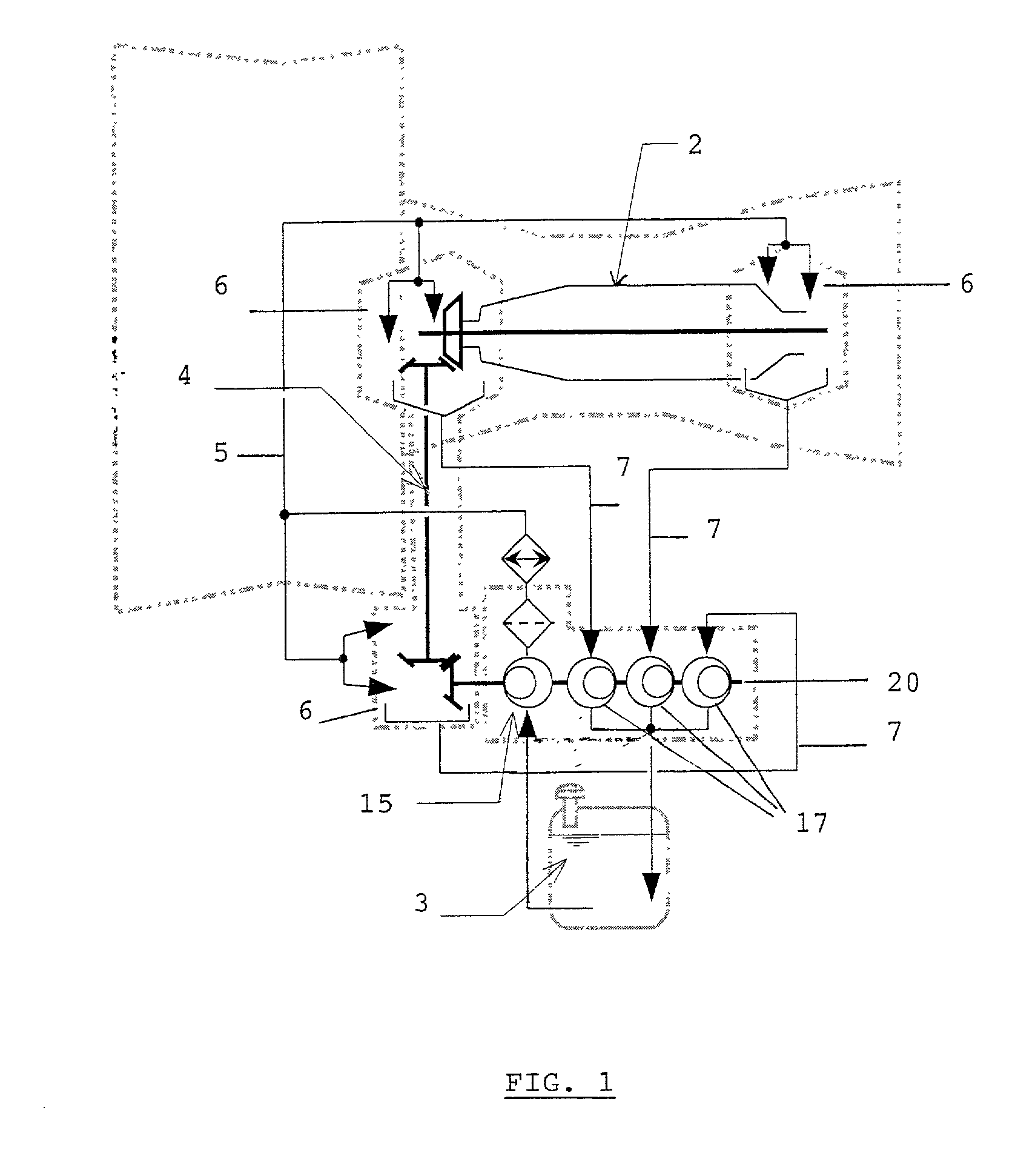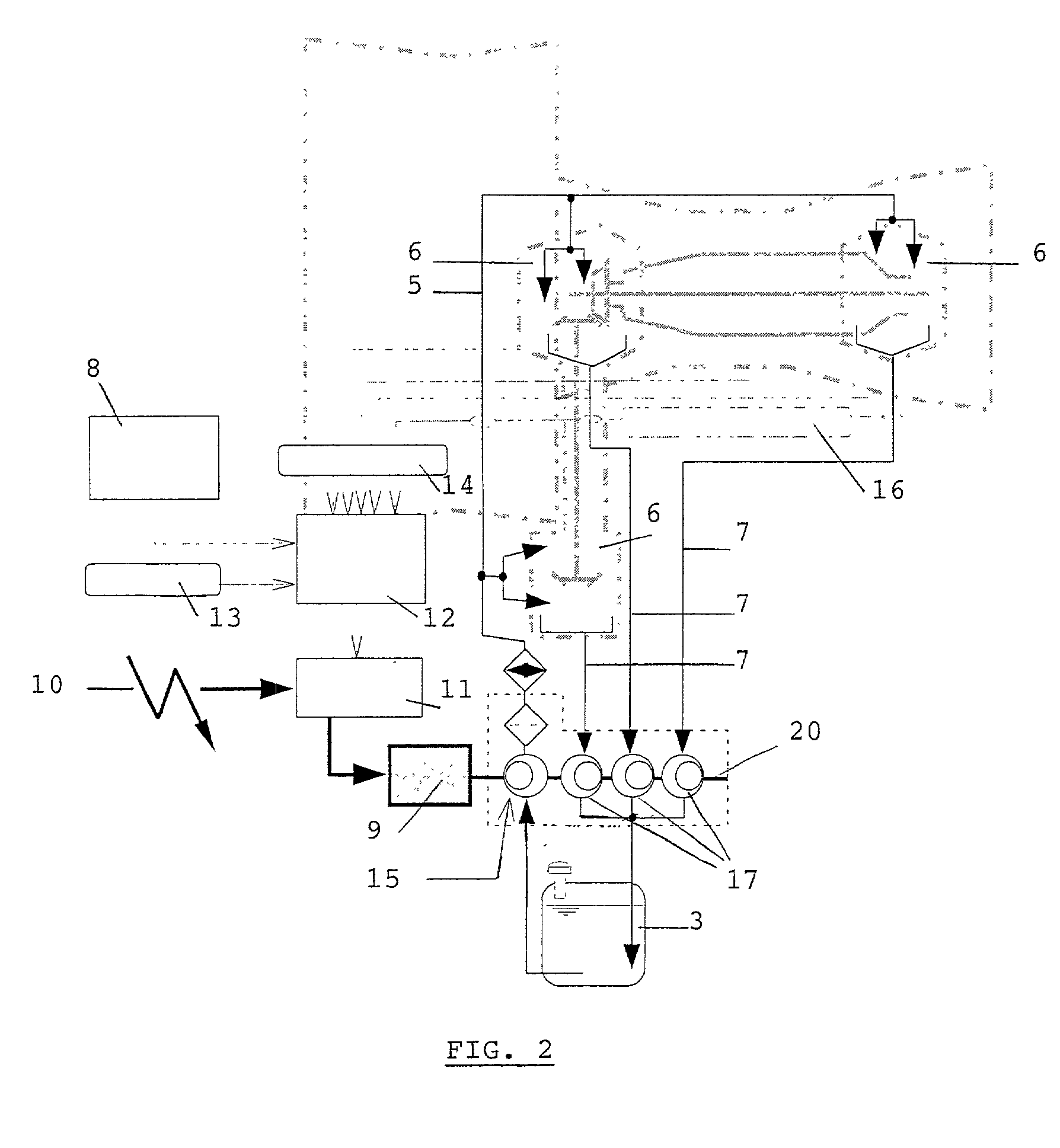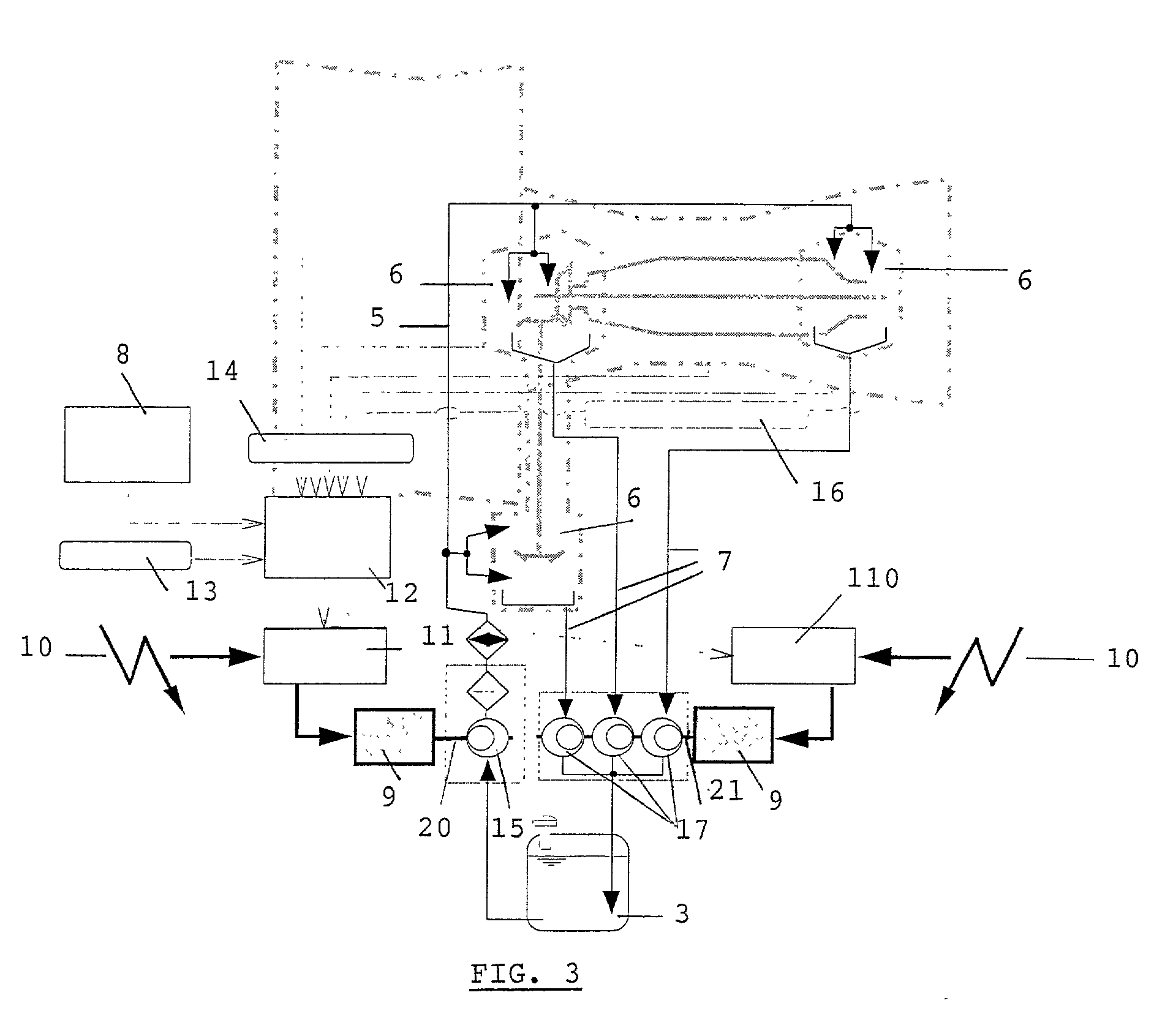Process and device for lubricating an aircraft engine
- Summary
- Abstract
- Description
- Claims
- Application Information
AI Technical Summary
Benefits of technology
Problems solved by technology
Method used
Image
Examples
Embodiment Construction
[0042] According to the prior art, as shown by the schematic view in FIG. 1, an assembly of lubrication pumps 15, 17 is arranged on a single shaft 20. This shaft is driven by a kinematic chain 4, which is in turn driven by the high-pressure shaft 2 of the engine.
[0043] The oil is first taken from the reservoir 3 and delivered by one or more pumps 15 to the various elements 6 to be lubricated, via a downstream circuit 5, and secondly recovered in the pan sections of the engine and returned by one or more pumps 17 to the reservoir 3, via a recovery circuit 7.
[0044] FIG. 2 is a diagram illustrating the general principles for the control of independently driven lubrication pumps, according to one preferred embodiment of the invention, in which all the pumps are grouped on a single shaft 20.
[0045] According to another specific embodiment of the invention shown in FIG. 3, the speed control unit 11 for the feed pump 15 is made separate from the common speed control unit 110 for all the rec...
PUM
 Login to View More
Login to View More Abstract
Description
Claims
Application Information
 Login to View More
Login to View More - R&D
- Intellectual Property
- Life Sciences
- Materials
- Tech Scout
- Unparalleled Data Quality
- Higher Quality Content
- 60% Fewer Hallucinations
Browse by: Latest US Patents, China's latest patents, Technical Efficacy Thesaurus, Application Domain, Technology Topic, Popular Technical Reports.
© 2025 PatSnap. All rights reserved.Legal|Privacy policy|Modern Slavery Act Transparency Statement|Sitemap|About US| Contact US: help@patsnap.com



